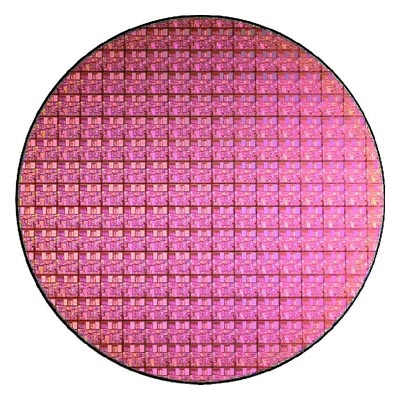Intel Pentium 4 (Northwood) processors
Introduction: January 2002
Overview
The Pentium 4 brand refered to Intel's line of single-core mainstream desktop and laptop central processing units (CPUs) introduced on November 20, 2000 (August 8, 2008 was the date of last shipments of Pentium 4s). They had the 7th-generation architecture, called NetBurst, which was the company's first all-new design since 1995, when the Intel P6 architecture of the Pentium Pro CPUs had been introduced. NetBurst differed from the preceding Intel P6 - of Pentium III, II, etc. - by featuring a very deep instruction pipeline to achieve very high clock speeds (up to 4GHz) limited only by max. power consumption (TDP) reaching up to 115W in 3.6–3.8GHz Prescotts and Prescotts 2M (a high TDP required an additional cooling that was noisy or expensive). In 2004, the initial 32-bit x86 instruction set of the Pentium 4 microprocessors was extended by the 64-bit x86-64 set.
Pentium 4 CPUs introduced the SSE2 and SSE3 instruction sets to accelerate calculations, transactions, media processing, 3D graphics, and games. They also integrated Hyper-threading (HT), a feature to make one physical CPU work as two logical and virtual CPUs. The Intel's flagship Pentium 4 also came in a low-end version branded Celeron (often referred to as Celeron 4), and a high-end derivative, Xeon, intended for multiprocessor servers and workstations.
The Pentium 4 had an IHS (Integrated Heat Spreader) that prevented the CPU core from accidentally getting damaged when mounting and unmounting cooling solutions. Prior to the IHS, a CPU shim was sometimes used by people worried about damaging the core. Overclockers sometimes removed the IHS on Socket 478 chips to allow for more direct heat transfer. However, on LGA775 chips the IHS was directly welded to the processor core, meaning that the IHS cannot be removed without irreparably damaging the processor.
In 2005, the Pentium 4 was superseded by the Pentium D and Pentium Extreme Edition dual-core CPUs.
The Northwood core
In October 2001, the Athlon XP regained a clear lead for AMD, but in January 2002, Intel released Pentium 4s with their new Northwood core at 1.6, 1.8, 2.0 and 2.2GHz. Northwood (product code 80532) combined an increase in the secondary cache size from 256KB to 512KB (increasing the transistor count to 55 million, up from 42 million) with a transition to a new 130 nm (0.13 micrometer) fabrication process. By making the chip out of smaller transistors, chips can run at higher clocks or at the same speed while producing less heat.
A 2.4GHz P4 was released in April 2002, and the bus speed increased from 400MT/s to 533MT/s for a 2.26GHz, 2.4GHz, and 2.53GHz part in May, 2.6 and 2.8GHz parts in August, and a 3.06GHz Pentium 4 arrived in November. With Northwood, the Pentium 4 came of age. The battle for performance leadership remained competitive (as AMD introduced faster versions of the Athlon XP) but most observers agreed that the fastest Northwood P4 was usually ahead of its rival. This was particularly so in the summer of 2002, when AMD's changeover to a 130 nm production process did not help the "Barton" and "Thoroughbred" Athlon XP CPUs clock high enough to overcome the advantage of P4s in the 2.4 to 2.8GHz range.
The 3.06GHz processor acquired Hyper-Threading technology that first appeared in Xeon, enabling multiple threads to be run together by duplicating some parts of the processor in order to let the operating system believe that there are two logical processors.
In April 2003, Intel launched new 800MT/s FSB variants, ranging from 2.4 to 3.0GHz. This was meant to help the Pentium 4 better compete with AMD's Opteron line of processors. However, when Opteron was launched, due to its server-oriented positioning motherboard manufacturers didn't initially build motherboards with an AGP controller. Because AGP was the primary graphics expansion port at the time, this missing feature prevented the Opteron from encroaching on the Pentium 4's market segment. AMD did boost the Athlon XP's bus speed from 333MT/s to 400MT/s, but it wasn't enough to hold off the new 3.0GHz P4. A 3.2GHz Pentium 4 Northwood variant was launched in June and a final 3.4GHz version was launched in early 2004.
Overclocking early stepping Northwood cores yielded a startling phenomenon. When core voltage (Vcore) was increased past 1.7V, the processor would slowly become more unstable over time, before dying and becoming totally unusable. This became known as Sudden Northwood Death Syndrome, which is caused by electromigration.
Source: Wikipedia, the free encyclopedia.





